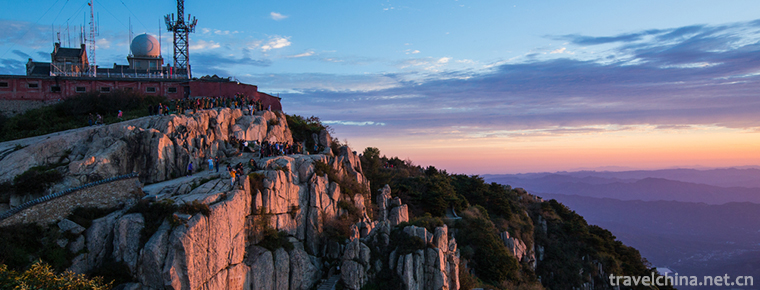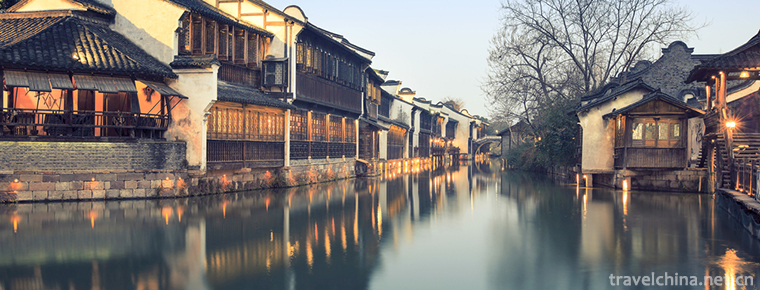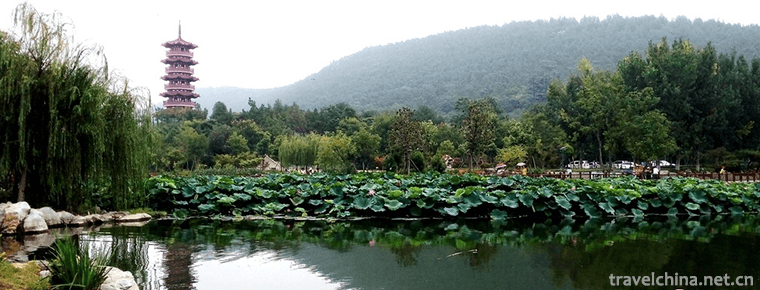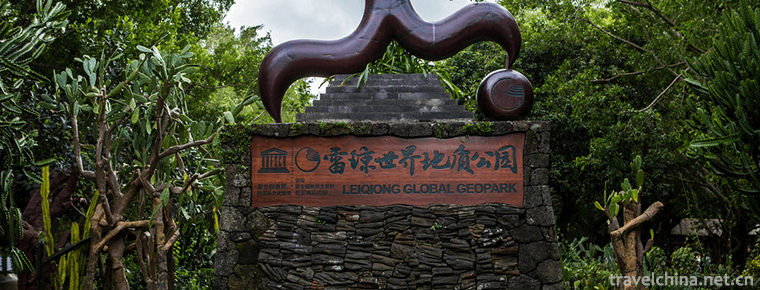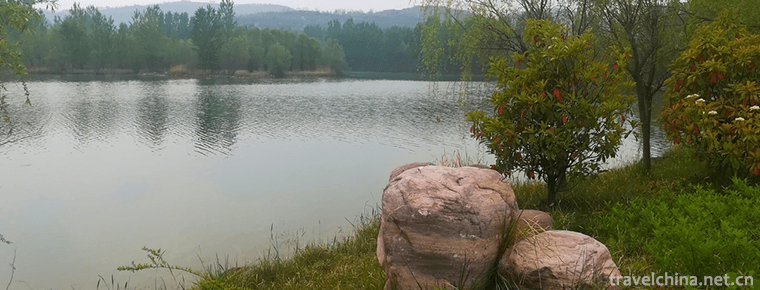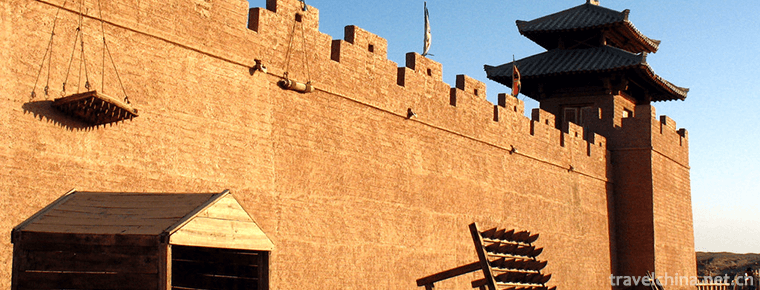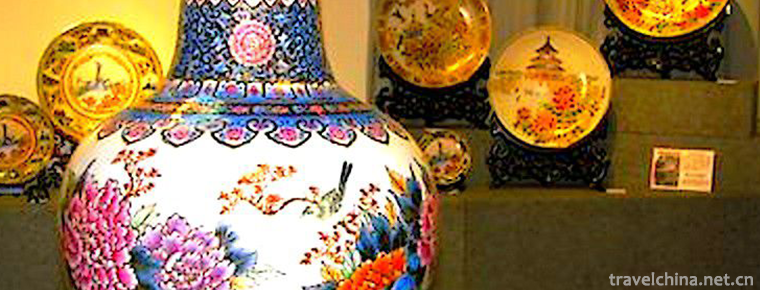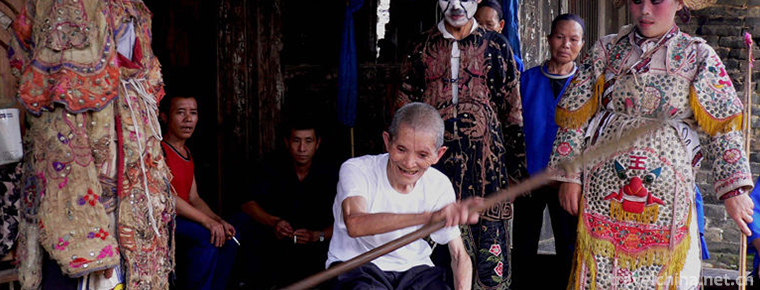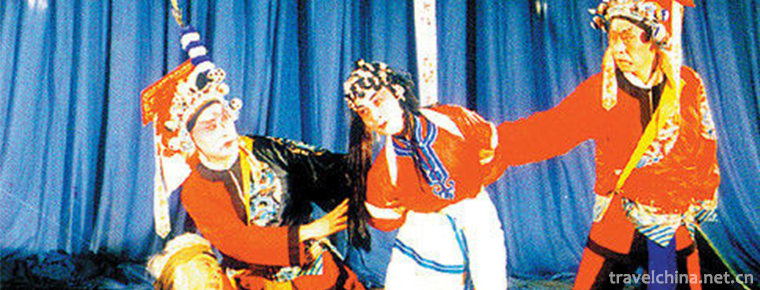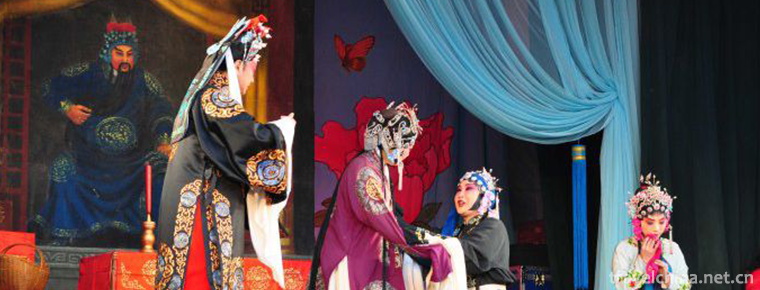Xiuyan Jade Carving
Xiuyan Jade Carving
Xiuyan Jade Carving, one of the national intangible cultural heritage, is a local traditional art in Xiuyan Manchu Autonomous County, Liaoning Province.
Jade carvings are traditional Chinese arts and crafts and enjoy high reputation in the world. Xiuyan is called "Yuxiang". Xiuyan jade is famous for its fine and pure texture and abundant reserves at home and abroad. The production of Xiuyan jade carvings began in the early years of Daoguang. Xiuyan jade carvings mainly consist of small pieces. Through the efforts of artists of past dynasties, Xiuyan jade carvings constantly bring forth new ideas and gradually form a unique artistic style with local characteristics. Xiuyan Jade Carving Crafts are mainly composed of four categories: plain living, characters, flowers and birds, animals.
On May 20, 2006, Xiuyan Jade Carving was approved by the State Council of the People's Republic of China to be included in the first batch of national intangible cultural heritage list, heritage number_-29.
historical origin
According to archaeological findings, from the Neolithic period to the Ming and Qing Dynasties, all the cultural relics unearthed in the past dynasties have jade carved with Xiuyan jade. Such as the Neolithic Jade Axe with Confucius, the Jade Veins with Birds and Beasts in Xia, Shang and Zhou Dynasties, the Jade Kneeling Man, the Beast-shaped Jade Pei in Warring States Period, the Jade Anti-evil in Qin and Han Dynasties, the Eastern Jin Dynasty, the Beast-shaped Jade Town in Southern and Northern Dynasties, the Beast-shaped Jade Cup in Tang and Song Dynasties, and the Yuan Dynasty. Yuguan Ear Cap Bottle, Ming Dynasty Dragon Head Jade Cup, Qing Dynasty Naju Jade Immortal, etc. These ancient jades have been tested by experts and the raw materials are Xiuyan Jade. In 1968, "Hamamelis Jade Clothes" unearthed in the tomb of Han Dynasty in Mancheng Lingshan, Hebei Province, were confirmed by laboratory tests that most of the 2498 pieces of Jade were carved from Xiuyan Jade.
Two pieces of jade unearthed from Xiajiadian culture in Beijing Museum are Jasper Jade Pei and Jade Bird and Beast Graphic Handle Ware. They are all made of Xiuyan Jade by laboratory identification. Nearly 100 pieces of jade, such as jade blocks and daggers, unearthed in Chahai, the earliest human village site in northern China in 8000 years ago, were also made of Xiuyan jade by laboratory identification. These jades, not only in China, but also in the world, are the earliest jades, known as "the world's first jade". The "Jade Pig Dragon" unearthed in Jianping County, Liaoning Province, and the "Jade hook dragon" unearthed in Sanxingtala Village, Wengniut Banner, Inner Mongolia, are both products of the Neolithic Hongshan Culture, which is also carved from Xiuyan Jade. Xiuyan jade has been identified in the Neolithic Liangzhu culture jades unearthed in Jiangsu and Zhejiang. More than 700 pieces of jade unearthed from Fuhao Tomb in Yinxu, Anyang, have been identified as more than 40 pieces of jade carved from Xiuyu. According to legend, the Qing Dynasty emperor Taiji carved the national jade seals of "the emperor worships the heaven" and Qianlong emperor carved the jade seals of "the biography of the national dynasty", all of which were carved from Xiuyan jade.
The production of Xiuyan's ancient jades began in the reign of Qianlong in the Qing Dynasty and gradually flourished in the period of Daoguang and Xianfeng. At the end of the Qing Dynasty and the beginning of the Republic of China, there were more than 300 people working in Xiuyan area. There were eight masters of jade carving headed by Jiang Baotang and two plums of plain living represented by Li Dechun. At that time, there were five kinds of jade carving products, such as figures, flowers and birds, animals, flowers, vegetarian living, etc., especially the vegetarian living technology reached a high level.
From 1950s to the end of 1980s, Suhuo craftsmanship made further progress. Xiuyu Tafun's representative work, Huaxia Lingguang, is 3.15 meters high. It is the largest vase craftsmanship in the history of Chinese jade sculpture so far. It won the "Golden Cup" in the evaluation of the National Hundred Flowers Award and was designated as a national treasure and stored in the Great Hall of the People.
Cultural characteristics
Technological characteristics
The technological characteristics of Xiuyan jade carving can be summarized as follows: according to material application, starting from material properties, material color, shape and so on, making the best use of jade materials; cutting dirty and removing ridges (dirty and ridges are the major taboos in jade products). Cutting out the dirt means removing the impurities from the jade to make it more pure and bright. Jade carving large pieces are generally difficult to find all without impurities of the jade, to do their best to cut dirty, the maximum use of materials. The natural cracks in Xiuyu are formed by the impact of natural force and the change of heat and cold, etc. The defects are transformed into yoga, the waste materials are used skillfully, the beautiful colors and the rich quality of Xiuyu provide a good basis for the skillful use of beautiful colors, and also make the products of Xiuyu more exquisite. The inner carving means carving two layers inside and outside on a piece of jade. Or three layers of scenery, is the "unique" of jade carving industry; Thread combination is the application of industrial threads, assembly technology in Xiuyu handicraft; In addition, the use of mosaic combination technology will be different colors of jade combination processing, finishing point, but also make jade carving works icing icing on the cake.
style
Xiuyan jade carving craft has formed a unique style after a long period of development. This style is a combination of vigorous, atmospheric, bold and unconstrained style and exquisite, exquisite and delicate, which is based on the northern culture and combines the northern and southern cultures. The formation of this artistic style of jade carving is the combination of history and reality. It is the accumulation of ancient jade culture in the north for thousands of years, and it is becoming more perfect today.
technique
Xiuyan Jade Carving is rich in techniques. It is known to the world for its typical craftsmanship, such as flexible rings and looping chains. Xiuyan Jade Carving has inherited the traditional techniques of Chinese Jade Carving. It is mainly composed of three-dimensional round carving and relief carving, supplemented by line carving, carving and thorough carving. It also has such techniques as hooking, collocating and bumping flowers. It is especially good at using such techniques as cutting dirt and removing strands, applying skills according to its aptitude, turning defects into yo, using waste materials skillfully, using beautiful colors and combining threads. The art of jade carving in Xiuyan is deeply influenced by the true biography of the famous Beijing school, blending the essence of Southern craft and unique northern style.
modelling
Xiuyan jade carvings are profound, simple and elegant in shape, rigorous, unified and extremely changeable, which can be described as both physical and spiritual, and full of vitality. Especially in imitating the stoves, bottles and fumigants before Shang and Zhou Dynasties and Qin and Han Dynasties, they are outstanding in the same industry. On the scale, they are not only large, large to several tons or even hundreds of tons, but also lovely, small to inch small pieces.
Production process
Xiuyan Jade Carving Living Technological Process mainly includes jade mining, broken materials, design, carving, brightness and so on.
1. Collecting Jade
Jade mining is divided into excavation and fishing. Fruit mining generally follows the old-fashioned practice, adopting open-air fruit mining, and transferring to underground mining one by one. Fruit fishing is generally divided into water fishing and soil fishing.
2. Broken materials
Broken material is the key process to determine the utilization ratio of jade. Experienced breaker can increase the utilization rate of jade by more than 50%. After the 1980s, in order to increase the number of broken materials, diamond circular saw blades were introduced, which multiplied the work efficiency.
3. Design
Also known as painting. Yuli Suhuo design is generally undertaken by full-time designers, most of whom have been engaged in jade carving for many years and have rich experience. The designer applies the technology according to the size, shape and color of the billet. First, sketch on the blank, the carver carves out the cone, then the designer carries out the second design. The parts of the cone are carefully depicted with brushes, and then the carver finely chooses, so that the cycle can be repeated several times. Designers are always guided by their work, and those who are savvy get the intention from their teachers and give full play to it. They often get twice the result with half the effort. Designers often design and modify plans at any time according to the internal conditions of jade materials until the layout is reasonable, the structure is compact, the image is lifelike, the tone is harmonious, the luster is shining and the acceptance is qualified.
4. Sculpture
In the art of using three-dimensional language, carving producers mostly grasp the actual position of jade from the front, side and overlook of the jade. If they can determine the actual position of each part of the jade carving in the jade, they can determine the processing allowance in accordance with their own habits and which blocks should be processed. When "eating line", we should know which blocks should be put out, which ones should be pushed down to as deep as possible, and which ones should be reversed. Deep carving is used for Sun's jade articles such as chains and rings. It is difficult to process, and a little carelessness makes them waste products. The process of internal separation is more complex. It is difficult to find out the double or triple quantities inside and outside a piece of jade. There are only a few people who have mastered the process of internal separation.
5. Bright
Brightness is the last process for Quyusu to leave Sun alive. The effect is smooth, bright and soft, and the ornamental quality of the work is improved. Its technology combines manual and mechanical. Cork is traditionally used as abrasive tool. The main process is as follows: The first step is to hand-rub the jade carved after the ball with flexible stone to remove its rough marks. The size and shape of flexible stone depend on the size and capacitance of the jade decoration. The second step is to grind the soft stones on the jades with fine gold garden sand. The third step is to rub it with 360 gold sandpaper. The purpose of the above three steps is to smooth the jade without leaving any trace and make it round. The fourth step is to use buffalo pulley to drive oxidation friction on the water bench (snakeskin drill for large works) to deepen the color of the jade, and then rinse it with clean water. The fifth step is to heat it with steam or lamp, brush it with Sichuan wax, and then light it with cloth wheel or cloth belt. After so many processes, the whole work will be told. Jade rope activation process is also very difficult in material selection and production.
Subject works
Xiuyan Jade Carving Crafts are mainly composed of four categories: plain living, characters, flowers and birds, animals. Suhuo is called Suhuo, which imitates ancient utensils such as stoves, bottles, tripods and fumigants before Qin and Han Dynasties. Jade carvings of Xiuyan figures are widely known for their materials. All historical figures, myths and legends, and opera stories are created, which deliberately innovate traditional themes. For example, the jade carving "Jingwei Reclamation" is based on the myth of "Shanhai Jing", while the jade carving "Bengxian" is transplanted into the opera "Legend of White Snake". Flowers and birds to flowers and birds, insects and fish as the theme of the creation of jade carvings called flowers and birds live. Jade carvings of flowers and birds began in the early days of the founding of the People's Republic of China and formed a special category after 1960. Mammal Lu jade carvings mainly include horses, lions, elephants and legendary dragons and hulin. In addition, it also produces Wenzhen, wine sets, cigarette sets, hand ornaments, handball, lion button seals and other products, a total of more than 100 kinds.
The representative works of Xiuyan Jade Carving include Xiuyu Tower Fumigation - Cathaysian Lingguang, Tiantan - Qinian Temple, etc.
Inheritance and Protection
Inheritance value
- Historical value
Jade carving is the most precious cultural heritage left by our ancestors, and as a product of history, it is the preservation and reflection of the original ecology of the development of productive forces, the development of science and technology, human creativity and cognitive level in different times in history. It is a synthesis of the connotation of history, art and science. Integration has historical value, artistic value and scientific value, which is the intrinsic value of cultural heritage and the basic characteristics of cultural heritage.
Art value
The artistic value is not necessarily possessed by all cultural heritage, but the plain jade carving products are skillfully crafted according to their materials and wastes. Through relief, round carving, hollow carving and other crafts, it perfectly demonstrates the exquisite plain living crafts, gives people the enjoyment of beauty, and reflects the cultural and artistic traditions and values of a region and a nation.
Scientific value
Scientific value refers to the technological level of science and technology reflected by craft and technology. The overall artistic conception of plain jade carving can be seen that belief, culture and worship of life totem in a period have important scientific value.
Current situation of inheritance
High-tech technology has entered the field of jade carving, and the handicraft technology has been greatly impacted. There are few master jade carving in Xiuyan area. The future of inheritance and development of Xiuyan jade carving is worrying, and measures should be taken to protect it.
Heritage figures
Wang Yunxiu, male, Han nationality, was born in 1952 in Xiuyan Town. At the age of 14, he was engaged in Xiuyan Jade Carving. He Desheng became a teacher, specializing in living sculpture. He was the representative successor of Xiuyan Jade Carving, the first national intangible cultural heritage project.
protective measures
In 2008, Wang Yunxiu, a non-hereditary heir, set up his own "plain living" studio for jade carving, and established a "plain living" inheritance system and training base for jade carving. In July 2013, Wang Yunxiu established a new inheritance base of Xiuyan Jade Carving "Suhuo" in Chengdong Village, Xiuyan Xinglong Office.
Up to 2014, Xiuyan County has established China Jade Culture Research Center, World Jade Carving Museum, Jade Carving Theme Park and so on. Xiuyan Jade Carving School and Xiuyan Jade Research Institute have trained a large number of middle and senior Xiuyan Jade Carving talents.
social influence
Honorary recognition
In 1998, Wang Yunxiu, a non-hereditary successor, completed his work "Temple of Heaven - Prayer for the Year" and won the "Tiangong Award".
From June 14 to 18, 2012, at the national jade carving "Jade Star Award" selection event held in Xiuyan, China and the third Jade Culture and Art Festival in Xiuyan, China, the expert judges made final comments on hundreds of "Jade Star Award" entries from all parts of the country, and judged 15 "Jade Star Award" gold and 20 "Silver Award" works. There are 24 bronze prize works, 11 best craft Prize Works and 10 best creative prize works.
Important activities
On June 6, 2012, more than 10 national and dozens of provincial intangible cultural heritage projects, such as Xiuyan Jade Carving, gathered in Shenyang for the 2012 China-Liaoning intangible cultural heritage traditional art exhibition.
From September 5 to September 9, 2013, the exhibition week of Liaoning Province's intangible cultural heritage exhibition, sponsored by Liaoning Provincial Department of Culture and sponsored by Liaoning Provincial intangible cultural heritage protection center, was held in Liaoning Grand Theater Square and Liaoning Museum Presentation Hall. Xiuyan jade carving craft was displayed in it.
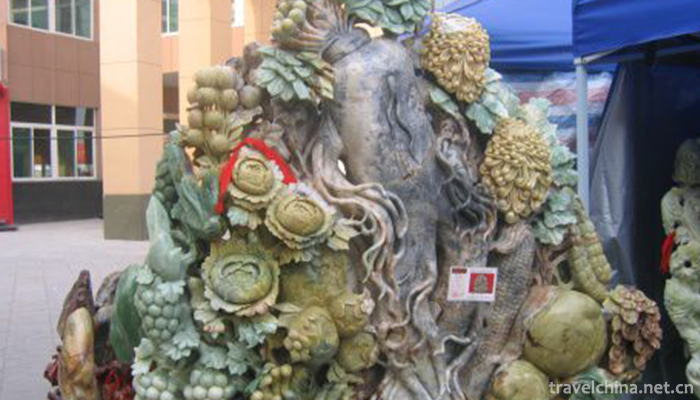
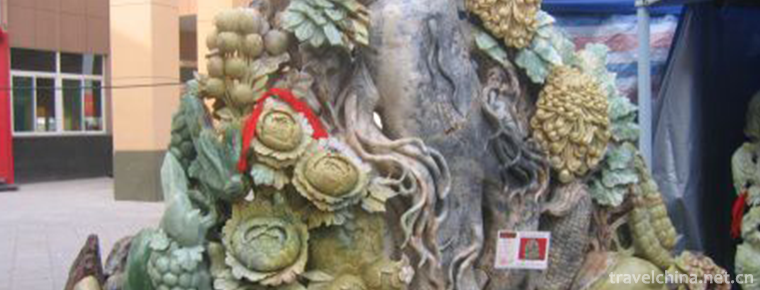
Xiuyan Jade Carving
-
Mount Tai
Mount Tai, also known as Daishan, Daizhong, Daiyue, Dongyue, Taiyue, is located in the central part of Shandong Province, belonging to Tai'an City, stretching between Tai'an, Jinan, Zibo, with a total
Views: 267 Time 2018-10-28 -
Wu zhen ancient town
Wuzhen, located in Tongxiang, Jiaxing City, Zhejiang Province, is located in the "Golden Triangle" of Jiangsu, Zhejiang and Shanghai
Views: 234 Time 2018-11-11 -
Yunlong Lake
Located in the southwest of Xuzhou City, Jiangsu Province, Yunlong Lake is the main scenic spot of Yunlong Lake Scenic Area in Xuzhou, formerly known as "Stone Dog Lake"
Views: 168 Time 2018-12-06 -
Leiqiong Haikou Volcanic Group World Geopark
Leiqiong Haikou Volcanic Group World Geopark is located in Shishan Town, southwest of Haikou City. It is only 15 kilometers away from the urban area. The Expressway
Views: 179 Time 2019-01-29 -
Xiaolangdi Dam
Xiaolangdi, the Yellow River Xiaolangdi, is located in the Yellow River Xiaolangdi Scenic Area at the junction of Luoyang City and Jiyuan City, Henan Province.
Views: 347 Time 2019-02-25 -
Yumen Pass Yumenguan
Yumenguan was named after Emperor Wudi of Han Dynasty when he opened the Western Regions Road and set up four counties in Hexi. The Han Dynasty was a gateway to all parts of the Western Regions.
Views: 624 Time 2019-03-06 -
Firing Techniques of Chaozhou Coloured Porcelain
In Chaozhou at the end of the Qing Dynasty, new colored pigments were used in the colored porcelain painting. Combining traditional glaze painting art with traditional Chinese painting
Views: 257 Time 2019-04-16 -
Dong Opera
Dong Opera, one of the national intangible cultural heritage, is a local traditional drama in Liping County, Guizhou Province, Tongtong Dong Autonomous County, Hunan Province and Sanjiang Dong Autonom
Views: 231 Time 2019-04-27 -
Qingyang Opera
During Jiajing period of Ming Dynasty, Yiyang Tune of Jiangxi flowed into Qingyang County of Chizhou Prefecture in Southern Anhui Province. It was combined with local language, folk opera (Kunshan Tun
Views: 182 Time 2019-06-11 -
Qu Opera
Opera is one of the traditional operas mainly spread in Henan Province. It was also called "Gaotai Opera" or "Quzi Opera" in the old days. Quju is popular in Henan Province and its
Views: 103 Time 2019-06-11 -
Topography and geomorphology of Luzhou
Luzhou city is a typical mountainous city with 56.14% of the total land area. It is mainly composed of high mountains (500-1000 meters above sea level) and middle mountain (1000-1902 meters above sea level). Taking the middle Yangtze River Valley as the lowest center, it gradually
Views: 325 Time 2020-12-14 -
Deyang natural resources
Deyang City is a subtropical evergreen broad-leaved forest area in Sichuan Basin. The horizontal distribution of vegetation is not different, but the vertical distribution difference is obvious. The forest vegetation is complex and diverse, and the vegetation community
Views: 329 Time 2020-12-14
